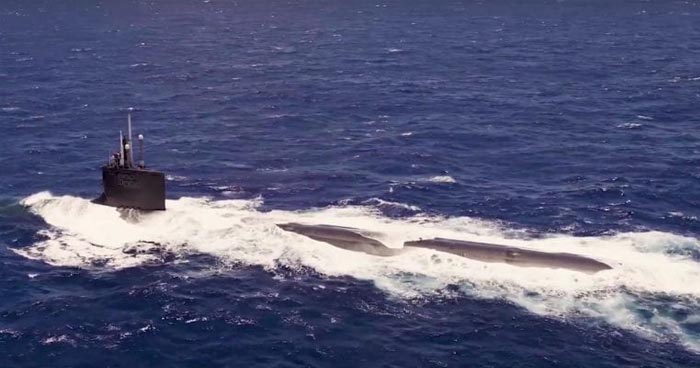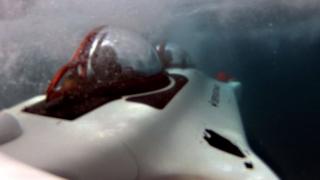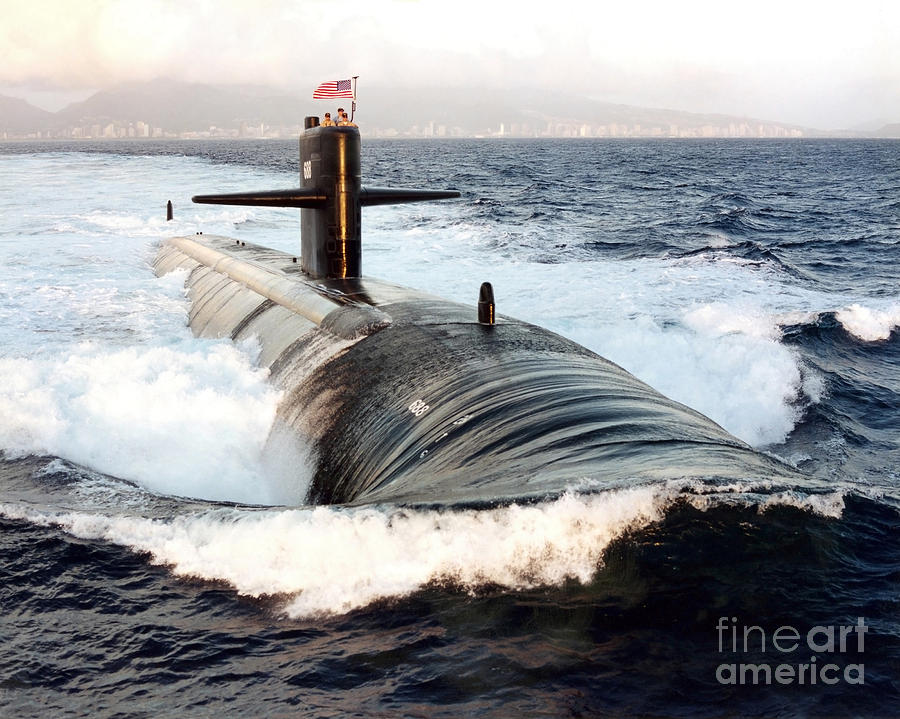
The first nuclear powered submarine, the USS Nautilus, used a very similar hull form as the German Type XXI submarines. This allowed the submarine substantially higher submerged speed compared to the Type VII submarines. The above photo is of a Type XXI submarine, you can see that all of the protuberances visible in the first photo is now enclosed. The Germans were the first to start streamlining all aspects of their submarines to improve submerged speed and endurance. As WW2 progressed anti-submarine tactics became more effective and the need for greater submerged speed and endurance became apparent. This drastically affected the submerged speed of the submarine.

While this stuff does not add to water drag when the ship is surfaced it does add a lot of drag when submerged. You can see in the above photo that there are lots of stuff sticking out above the waterline. USS Drum (SS-228) on display as a museum ship It was more important to optimize their speed on the surface so the hull form of submarines looks like that of any other surface ship. This was due to the submarines’ limited endurance while submerged. Cavitation damage evident on the propeller of a personal watercraft.Īs you go deeper the initial pressure goes up – so if your prop cavitates at 5 meters depth it will not cavitate at 15 meters depthĪt 100 meters you can put a lot more power into the prop without it cavitating – so the result is that if you have enough power then you can go FASTER at depth Historyīefore and during WW2, submarines spent most of their underway time on the surface. Hence all the force from the engines will be in use. The deeper it goes it will be less cavitation and with no cavitation the propeller will be fully efficient creating forward propulsion. Submerged the water pressure will make the propeller to have less tendency to cavitate. (Image: Wikipedia)įor a submarine this is a triple problem – it reduces “thrust” – wears out the prop and makes a noise – not what a submarine wants.

Cavitating propeller model in a water tunnel experiment. These “bubbles” or “voids”, collapse and can generate shock waves that may damage machinery. One of the most important limits on the performance of your propeller is “Cavitation” – this occurs when the water is moved too fast and that causes a pressure drop that is enough to cause a bubble – a void.

The viscous drag goes up underwater because the wetted surface increases, but this is more than compensated for by the loss of wave drag. This effectively reduces the hull-speed induced drag to a point where it can be ignored. When submerged, the displaced water is pushed in all directions, and gravity has a much smaller impact. And even well-streamlined submarines have holes and ridges and antenna. Of course, water is not an ideal fluid, but it is close.

In an ideal fluid (one with no viscosity) there would be no drag on a streamlined shape underwater, but it would still produce wave drag on the surface. Visual presentation of the result of hull resistance calculations.
#Bow wave underwater submarine surface skin
But the blunt bow of a submarine, which helps reduce skin drag submerged, increases wave drag. A sharp angle bow or a bulbous bow can reduce wave drag. All vessels traveling on the surface of the water must contend with this.
#Bow wave underwater submarine surface free
This type of drag occurs on the surface where the water is free to create waves. Modern submarines approximate a teardrop shape, which minimizes this type of drag.


 0 kommentar(er)
0 kommentar(er)
